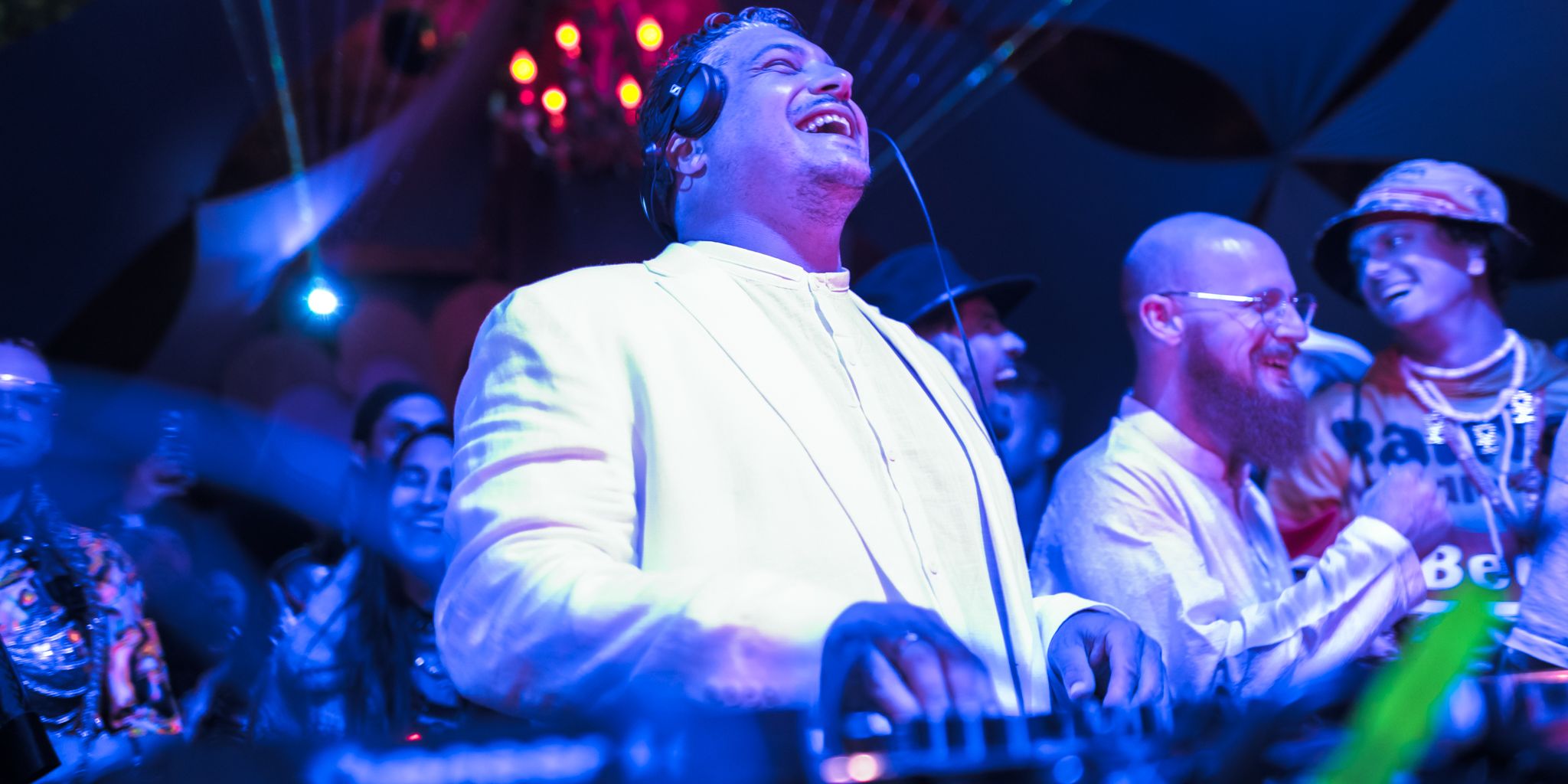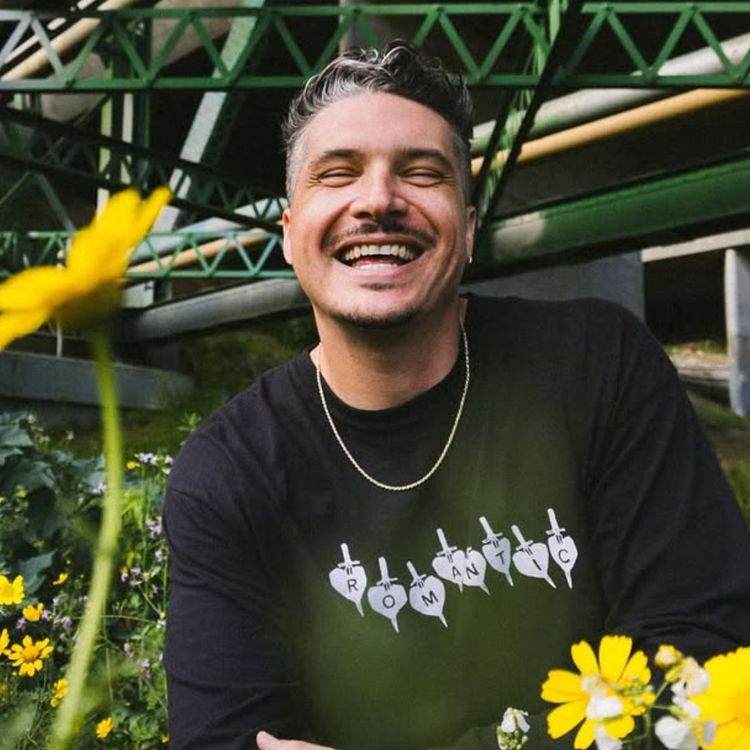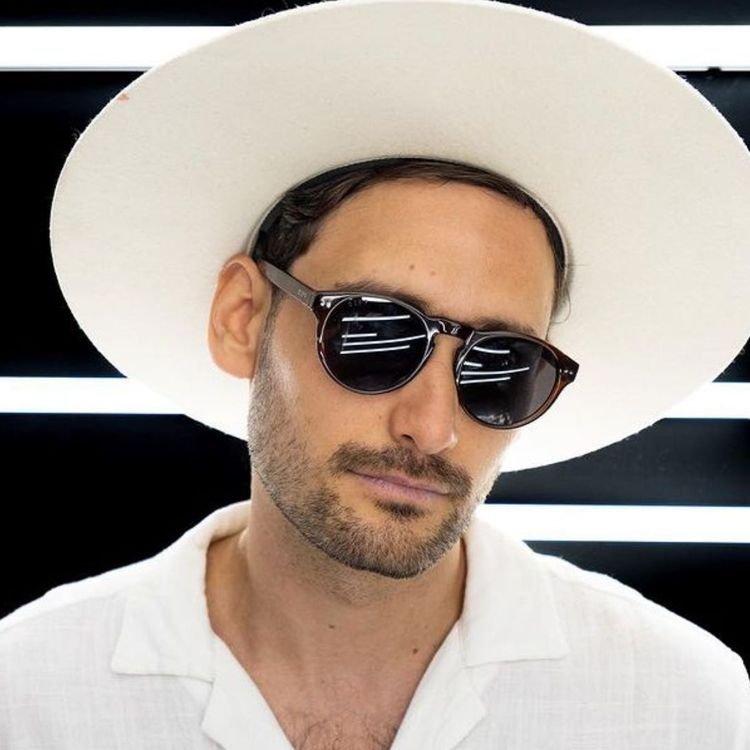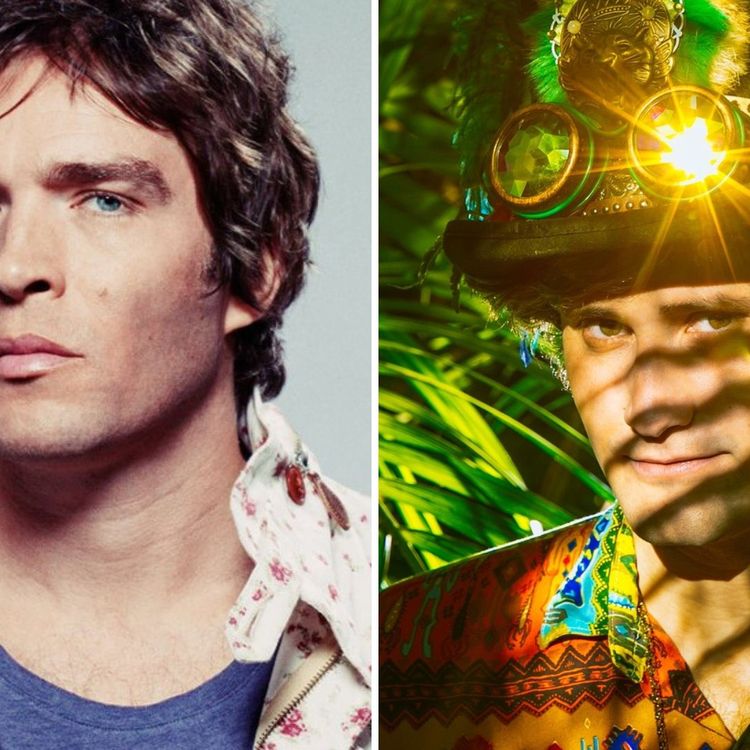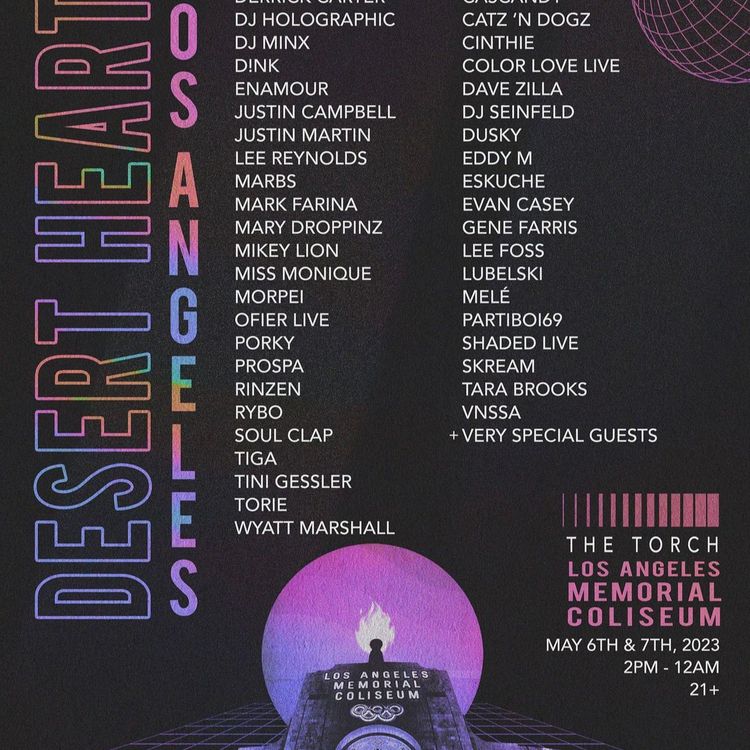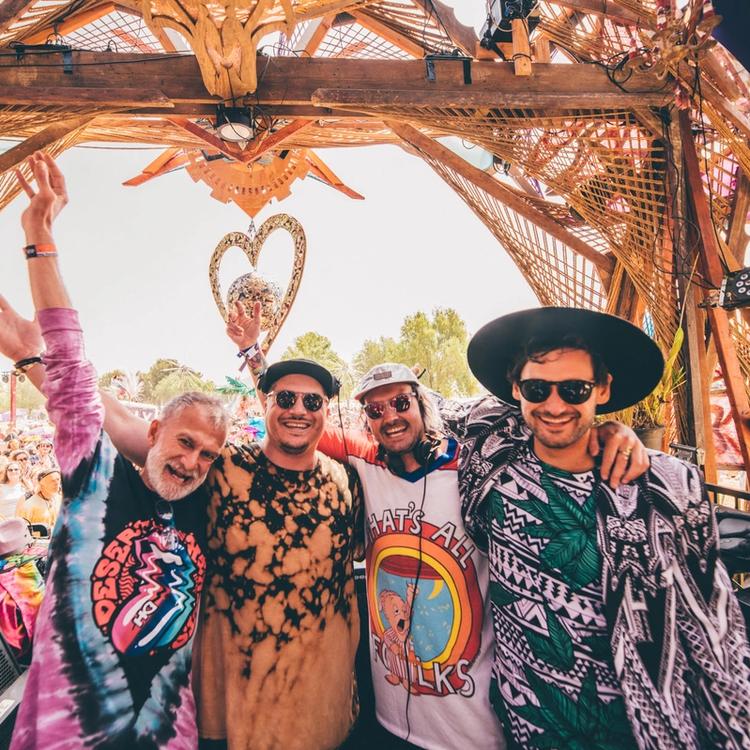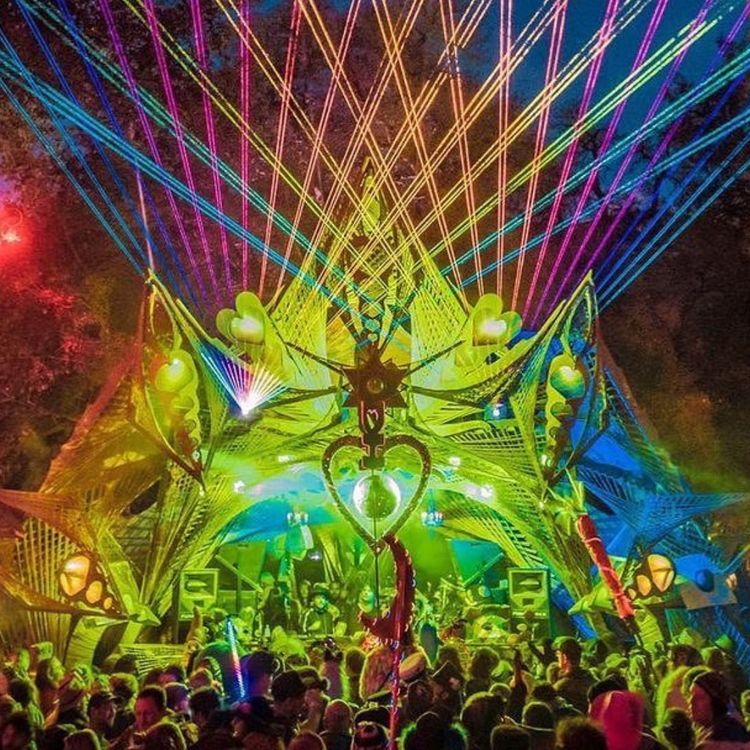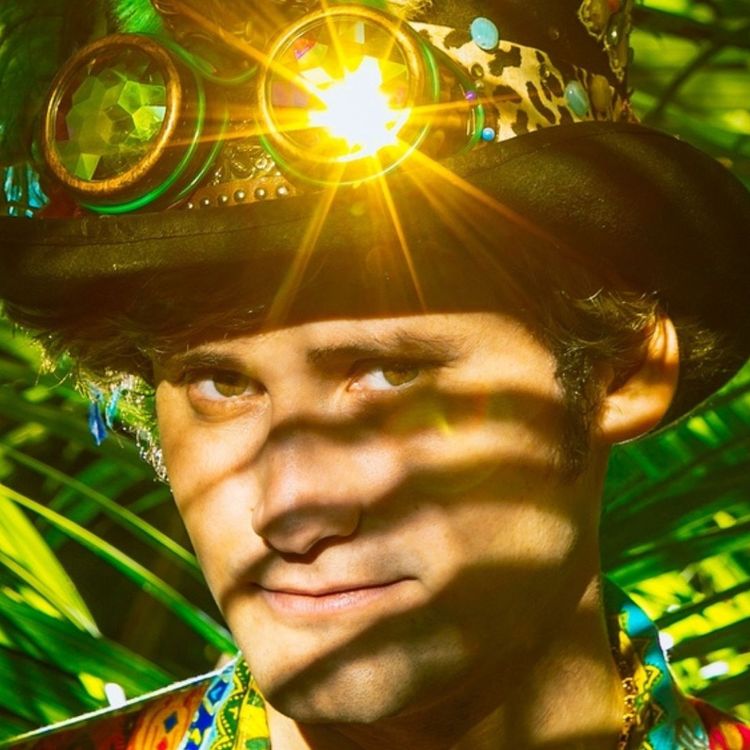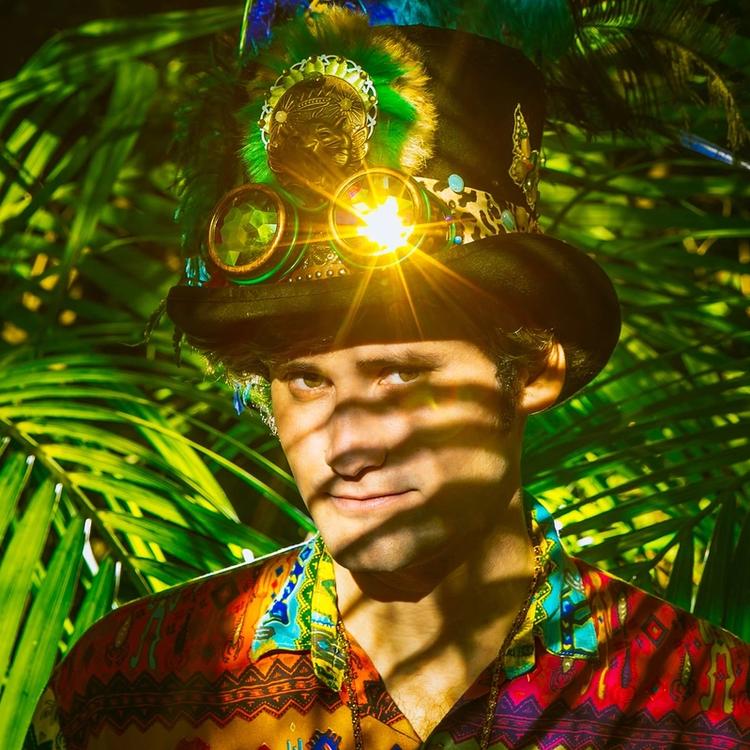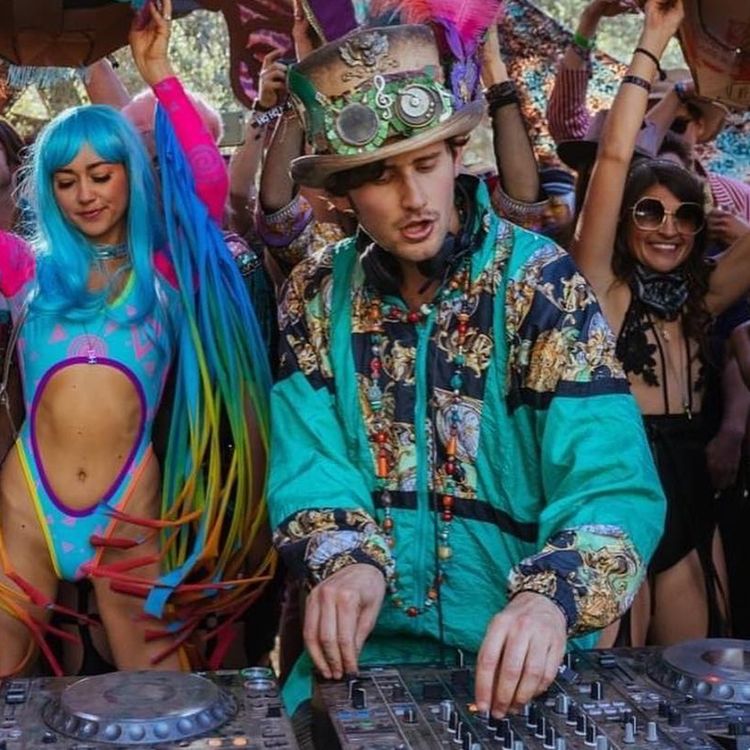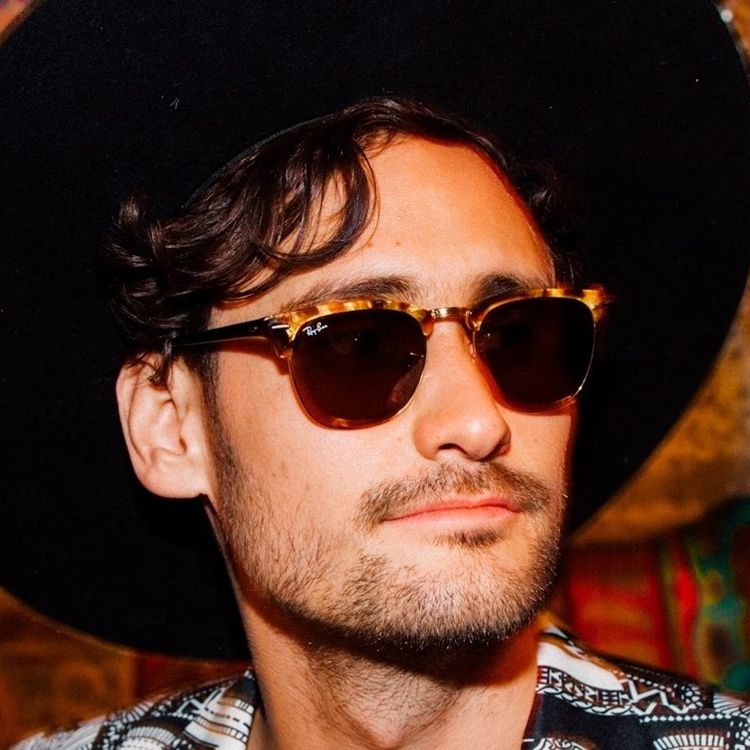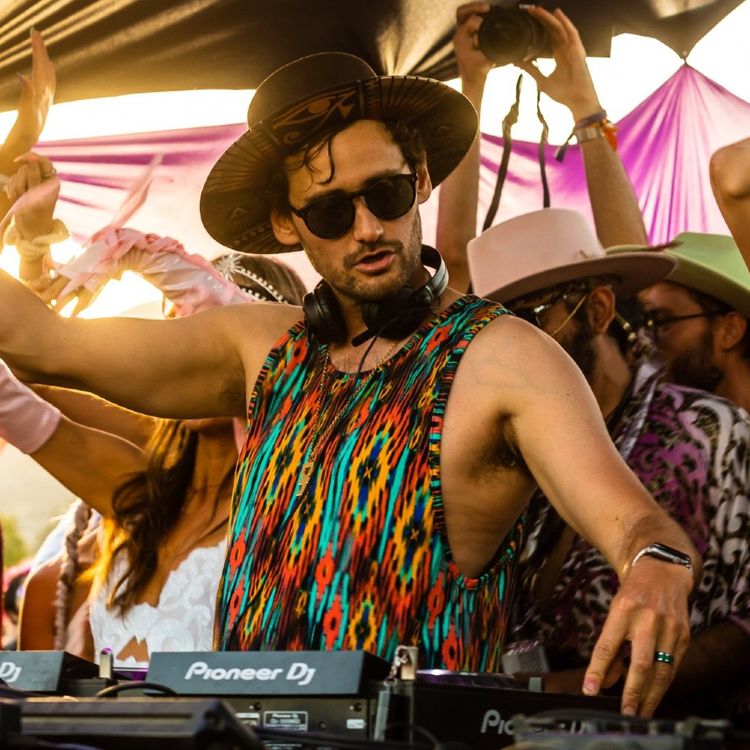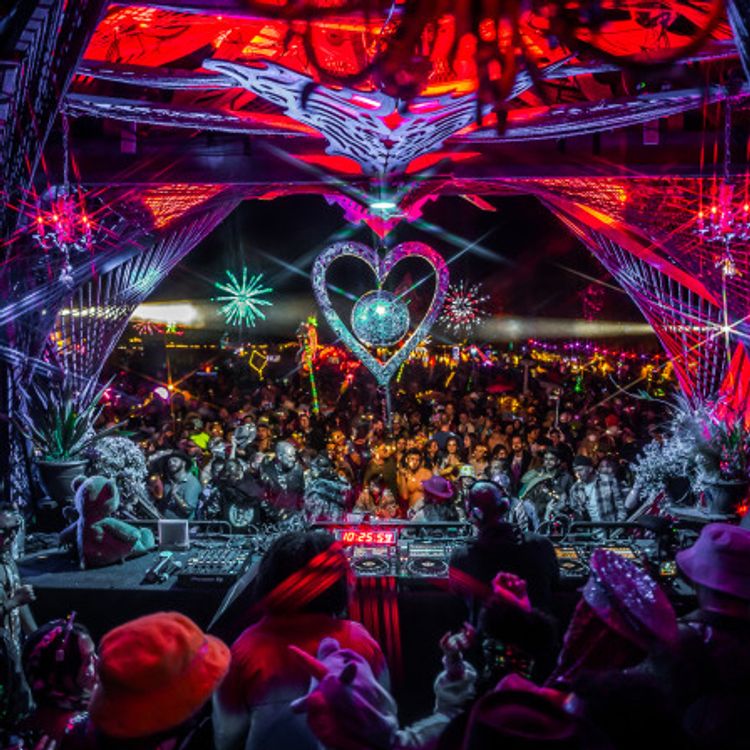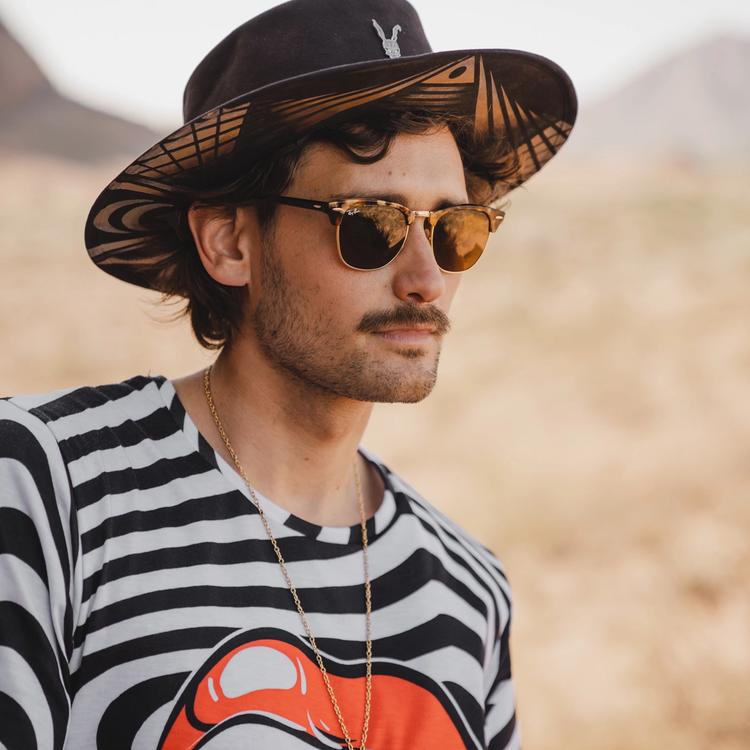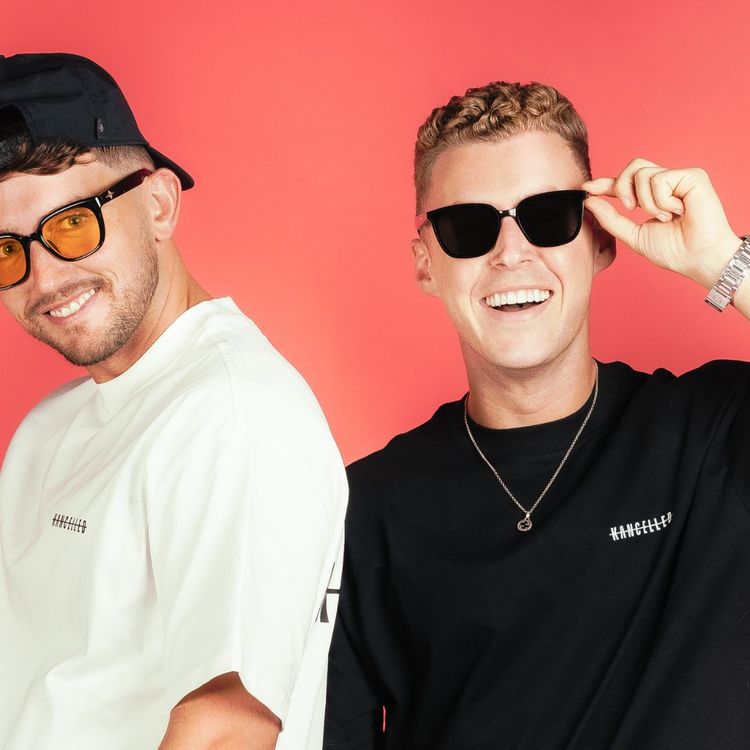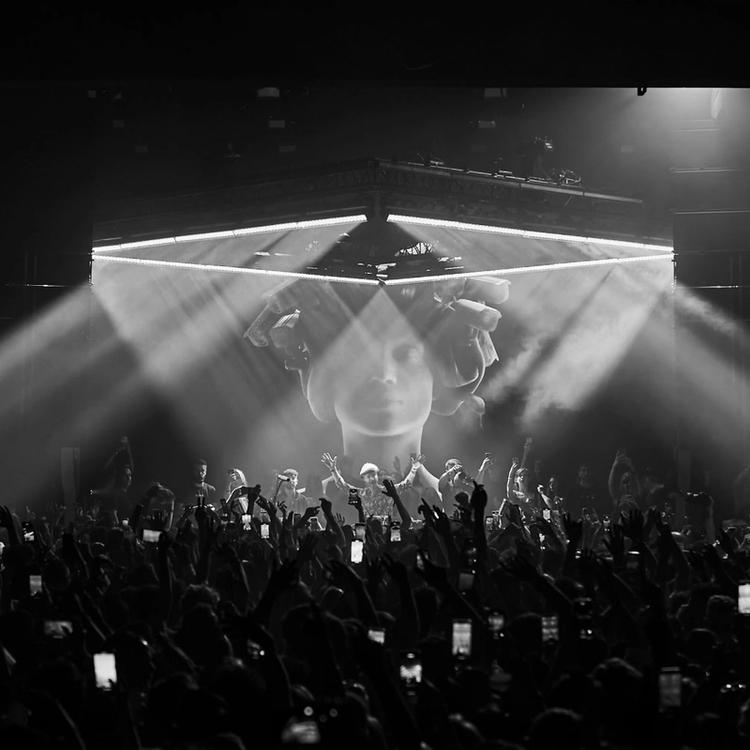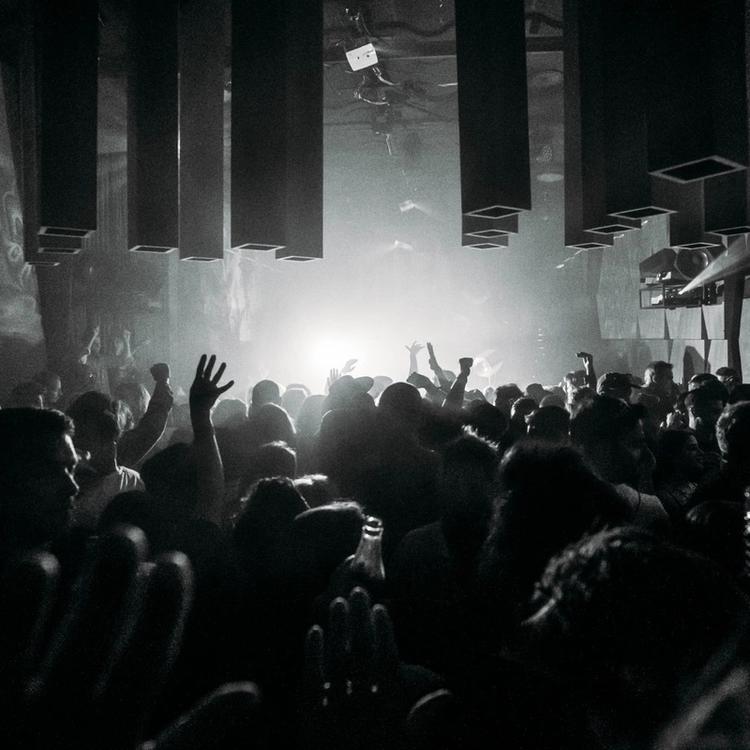The Deep Dark Soul of Desert Hearts Black
In the early 2010s, before emerging as a leading North American boutique festival, Desert Hearts' initial offerings around their San Diego stomping grounds included "jungle parties" in Encinitas.
"Small venues, all friends partying and having a blast. Post-college and before anyone really had an idea about Desert Hearts, and just wanted to DJ," explains Desert Hearts Black co-founder Evan Casey.
"That's where I first met Mikey [Lion], first met Marbs. Later, I really met them and connected at a warehouse party in San Diego. Mikey was playing, the party was a proper warehouse with great energy. The friendships started there.
"I loved everything they did, what their perspective on the culture was, and just how excited they were to be building," reflects Casey. "There was just something about the intimacy of it where it felt like everybody there knew each other, and that's been the really special thing that's grown over the years."
Desert Hearts fostered the revelatory intimacy Casey speaks of with their flagship event, Desert Hearts Festival, a dedicated 24-hour per day music schedule and one stage, one vibe concept. Quality music, all the time. No need to look for your squad, they'll be at the stage. No need to create a spreadsheet to account for stage conflicts, either, because it's all here.
The crew recognized early on that a genre-fluid approach was necessary to program the entire Desert Hearts experience appropriately.

Marbs at Desert Hearts Festival 2022
Keiki LaniKnudsen
"Marbs and I were known within the crew and especially the community as the two who played the darker music," Casey tells Gray Area. "There was a lot more house. We were the two who carried that sound in the early days. We just wanted to be ambassadors of that music that meant a lot to us."
“I’ve always leaned more into dark, mysterious, journey-driven music, which has played a key part in building the foundation of my sound,” says Desert Hearts co-founder Marbs. “Using the term “dark” as an overall term that describes my sound has always been difficult for me because I find beauty and light in that darkness – and I think my music has always reflected that.”
In addition to the overarching sonic influence of so-called “darker” music, “psychedelics have had a large presence in my life and my own personal development from an early age, and that influence is reflected in my music,” Marbs explains. “I like to take listeners on a ‘trip’ – finding moments of bliss and euphoria, intermixed with a simultaneous exploration of growth and self-discovery.”
By 2014, the Desert Hearts community had grown to the point where a label synonymous with the brand became a virtual necessity. Mikey Lion says he founded Desert Hearts Records with a look towards "artists that I really enjoy, to further build the Desert Hearts brand and our whole art and everything we're trying to do."
In addition to helping guide the initial sonic development of the burgeoning label, Marbs created original cover art for seemingly all of the Desert Hearts Records releases in its first five years. His neo-hippie gothic-burner, technologically tribal, deconstructed psychedelic graphic design style also made its way onto many Desert Hearts event flyers throughout the years.
“I started drawing at a very young age, was in honors art classes in high school, got into graffiti and painting during those classes, and later learned my way around photoshop,” Marbs recalls. “When Desert Hearst Records launched, I would hand-draw many of the release artworks and then modify them in Photoshop. Once Desert Hearts Black launched, I stopped doing Desert Hearts artwork and focused solely on my imprint.”
“The style is basically an intricate photo collage that integrates hand-drawn elements as well. I love having an outlet for my art that parallels my music. It's such a multi-tiered and amazing way for me to activate all the things I love.”
As a half decade passed following the establishment of Desert Hearts Records in 2019, Casey and Marbs knew they needed to create an imprint of their own that ran directly parallel with their darker artistic tastes. Above all, the pair couldn't ignore the ever-growing community hunger for original compositions of those ominously groovy sounds purveyed by Marbs and Casey. Sounds devoured, sonic course after sonic course, by Desert Hearts regulars in ever more hedonistically thumping reveries.
"Desert Hearts is such a beast on its own. The label is so specific to the bright sounds of what Desert Hearts is," says Casey. "We thought that without trying to become the same thing, there could be this split in the road that encompasses all of it — where we get to do everything from the deeper, techno, melodic, indie. The stuff that really pushed us."
WORDS WERE SPOKEN
"The first time the [Desert Hearts Black] words were spoken, Marbs and I were together at a Moderat live show," Casey reminisces. "We were just taking in what they were doing — not only in their music but in their visuals, their production level. We just had this moment of, 'how do we make what we feel and want to share, what we care about, into its own presentation?' We started to sit down and think about artists that meant a lot to us and inspired us."
Of Casey and Marbs’s Moderat live experience at Coachella, Marbs says that “was an incredible experience that planted a seed in us.”
"In the 2010-12 era, it was all about the Life and Death label for me," Casey remembers fondly. "The curation from [DJ] Tennis, and Tale of Us, Mind Against — all these artists," says Casey. "That, mixed with the early Crosstown [Rebels] days, and anything from the Art Department side, and obviously Damian [Lazarus] running the whole thing. But it was really the early days of Life and Death which eventually led to this whole next phase of Afterlife which has shifted pretty significantly. Anything Life and Death was doing in that era was so good to me! And then, even in the psychedelic rock side that we'd both grown up on, that was heavier, darker — not quite as bright as other things we'd been around.

Evan Casey
"All of that weighed into the music we fell in love with. It's the same for everyone within the crew — you just felt that whatever people were playing was genuinely their favorite music in the world," says Casey. "That's why the dancefloors resonate so much at a Desert Hearts party. You can just see that flooding out of people. It's the same for us — we fell in love with the darker side of music. Desert Hearts Black was this brainchild of what we'd already been doing," Casey reasons. "There's something about the late-night journeys that always resonated with Marbs and myself, and Rinzen in the more recent years. It was never the long-term goal [to start a label] as much as it was to just share that music with people."
Gradually germinating throughout the mid-to-late 2010s, nowadays, the two opposing faces of the Desert Hearts Records and Desert Hearts Black coin have been fully struck and minted.
“I’ve focused on developing Desert Hearts Black to stand as an imprint that can't be pigeonholed into one sound,” Marbs tells Gray Area. “Techno, breaks, melodic house, indie dance, and even left-field electronica sound has a home with Desert Hearts Black. I personally get a lot of inspiration from old school Maetrik, Robag Wruhme, Ellum, Tau, Innervisions, Pampa, and so many other amazing artists and labels. But my vision for Desert Hearts Black is to find the spaces between genres, and to push the genres we do release forward into new and exciting places.”
"It's a broader horizon of people that we can reach having these different sounds that are going out," Lion tells Gray Area. "It makes people feel included when we're at our Desert Hearts festival."
"We always try to have a really broad spectrum of music there that ranges the whole house and techno genres."
THREE VERY PRODUCTIVE MINDS
"I'm really glad that Desert Hearts Black exists," Los Angeles-based Desert Hearts Black resident Rinzen (né Michael Sundius) states quietly with deliberate gratitude. "Before it came about, there was a void in both the Desert Hearts community for people wanting darker, more melodic music, as well as a void in the American electronic scene in general for this type of music."
Rinzen has an intimate topographical knowledge of North America's web of electronic music scenes. In addition to his ongoing releases on venerated labels, including Factory 93, mau5trap, Yoshitoshi, John Digweed's Bedrock Records, Sasha's Last Night On Earth, and Lane 8's This Never Happened, Rinzen is also a bonafide electronic music journalist.
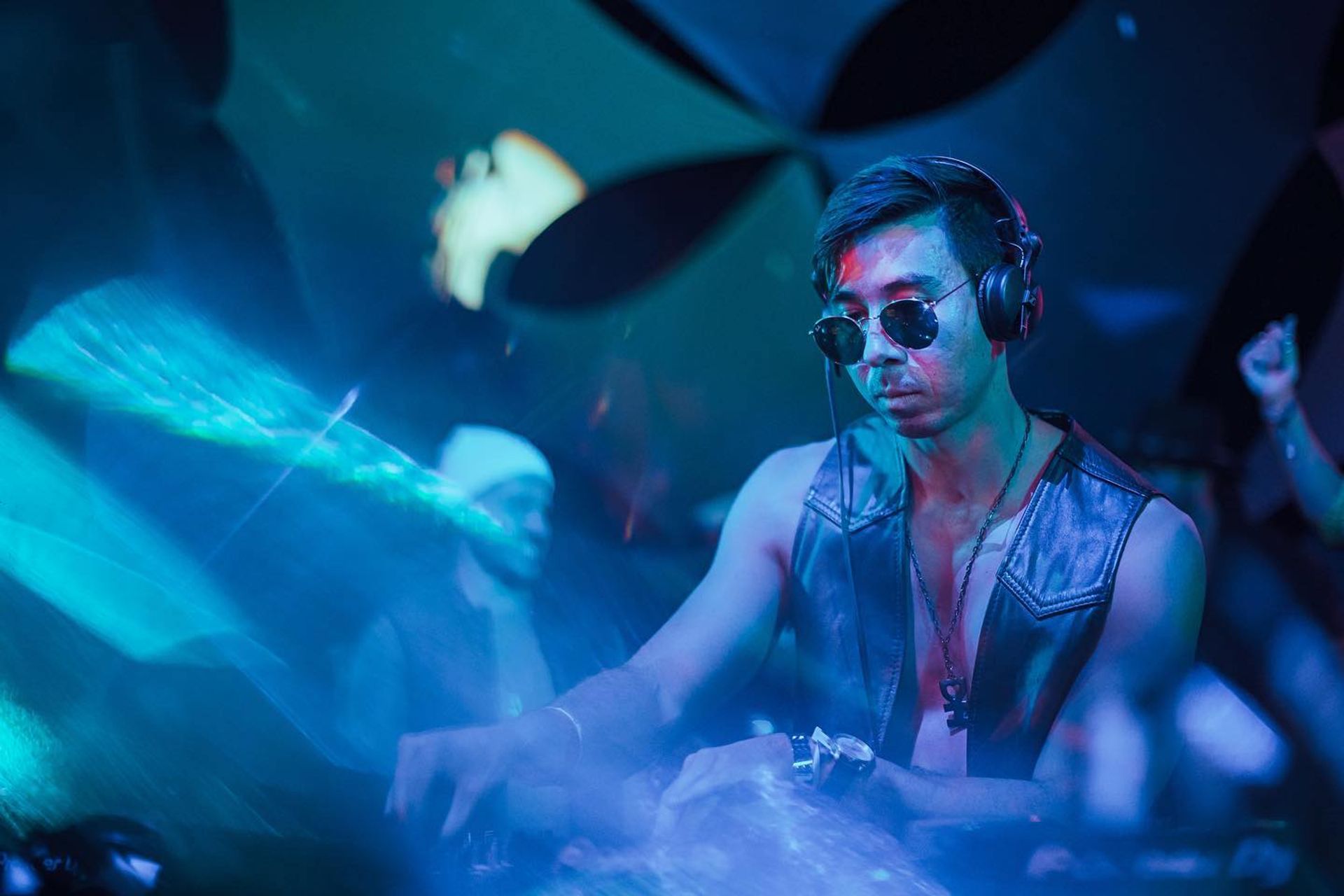
Rinzen at Desert Hearts Festival 2022
He began his reporting career as a Staff Writer for Dancing Astronaut during his freshman year of college in 2011. He eventually became the Managing Editor. Even when he was starting to seriously hone his craft as a producer, he was also a regular contributor to Billboard.
"When I tend to write darker, more cinematic stuff, oftentimes it's a good fit with Desert Hearts Black," Rinzen ponders. "Sometimes I find myself writing very melodic, more emotional tracks which sometimes find their home on Lane 8's label, or mau5trap, or these other avenues."
But before his Desert Hearts debut in 2019, Rinzen was just another passionate festival attendee, albeit one of the professional journalist varieties.
"Rinzen was coming to Desert Hearts on his own. We didn't know him for his first couple of years," explains Casey. "He just came with his friends and enjoyed the parties. He reached out to me a month or two before the festival [in 2018] and sent me a couple of his tracks. Great music!" Around that time, Casey also moved back to Los Angeles.
"[Rinzen] invited me to come work in his studio over on the west side in Santa Monica after the festival," Casey recalls. "So we were able to link up there. It was the first time we met."
"Both Evan and I musically, our heads have always been really invested in what's going on in Europe. Specifically with the darker, melodic house and techno scene," says Rinzen of the musical headspace he shares with Casey. "There's a bunch of labels out of Germany, some out of Italy which have captured our attention for the past eight years. So when I saw him playing at Desert Hearts for the first time in 2018, he was playing a bunch of similar tracks that I was also very much into. So when we got into the studio together, it was like, let's just pull influences and make something like that."
"We were listening to a ton of Afterlife stuff — we really bonded over Mind Against, and also Recondite," says Rinzen. "A few other labels out of that scene — Stil vor Talent, Solomun's label Diynamic."
After clicking in their initial studio sessions, Rinzen and Casey quickly released a single on German label Parquet.
"I said to Marbs, 'this guy is an absolute wizard in the studio!'" Casey remarks, emitting a spark of the same disbelief he must have felt when he first collaborated with Rinzen.
Afterwards, Rinzen says, he "brought Marbs and Evan out to my studio in Venice. Right off the bat we started having this insane chemistry in the studio with the three of us. Almost immediately we wrote four tracks and were so blown away at both the speed at which we'd written and the combination of styles and how accurately how it reflected where the three of us were musically."
The result was the three-track Torus EP, in which Marbs, Rinzen, and Casey are all credited individually as collaborators on each track, which "led to the creation of the Desert Hearts Black label," Rinzen says.
“Rinzen is just such a humble and amazing human,” Marbs says. “It’s always a pleasure working with and getting time with him. The first time we collaborated was incredibly smooth and in-flow. I think we made Torus and the rest of that EP in one week. He’s brilliant in the studio. Anything we dreamed up he could make, and that made it really fun to go wild with ideas. He was an integral part in the birth of the Desert Hearts Black project.”
"The coolest part is you can really hear — if you know the three of us — you can hear the three of us in the music," says Casey of the Torus EP. "There's a lot of different elements in there, but as much as we overlap, the three of us do sound quite different. That was an amazing collaboration."
“The Torus EP fit into the Desert Hearts umbrella of sound you'd find at the festival, but it didn’t quite fit into the Desert Hearts record label,” Marbs says. “That’s where I got the idea of building this sister label, one more tailored to the late-night and early-morning dancefloors.”
Although Rinzen's direct collaboration may have been the final catalyst for establishing Desert Hearts Black (alongside the penultimate motivation of Marbs and Casey's ongoing musical relationship), he is adamant that the label's shared history should reflect the founding duo rather than trio.
"The key artists are Marbs at the forefront, and then Evan as well. They're the whole brains and vision behind the entire label," says Rinzen. "I'm happy to contribute where I can musically and as a DJ — but it's really the vision of those two."
Although deferential to Marbs and Casey here — and in light of his recently released Fade EP with John Monkman — Rinzen remains the second most released artist on Desert Hearts Black with four numbered projects. That's just one release behind Marbs's pack-leading five. No other artist has more than two.
"[Rinzen] is one of those people who truly did it right," says Casey. "He just put his head down, went into the studio, and worked for five years. He is just a crazy mind to share that space with for what we'd been working on. We all just got along on such a human level, beyond the music. We just really saw things the same way. We cared about the same things when it came to careers going forward. And then obviously, the music brought us all together."
"We love [Torus]. We think it encompassed everything we wanted it to be in terms of representation of the label before it was known," reflects Casey in a moment of warm retrospection.
As for the current sound of the label vis-a-vis DHB001?
"It's really built off of that," Casey concludes.
SORTS OF SOUNDS
"When [Desert Hearts Black] first came out, there was a heavy, heavy influx of the melodic techno sound," Casey recalls. "We do love that, and we were welcoming [of] those sorts of sounds. But it wasn't really all that we were trying to do. We weren't getting a ton of raw, or real, techno. We were getting a little more deep, a little more melodic, and so that did curate the first couple months' releases. But the Thugfucker release [Interdimensional Journeys] was very heady and experimental — just different. So that piqued our interest of like, 'great, this doesn't just have to be this specific sound. We can keep pushing it.' That's something that Marbs has been adamant about the whole time, really wanting to push in new directions to allow everyone to think that they might have music for us."
As far as the specific genres that Desert Hearts Black focuses on now that they've reached more than fifty releases?
"It's a danger to fall into genres, but at the same time it's what people resonate with. So on some level, you need to use those words," Casey admits. "But — we really just like getting weird music!"
“I think music is constantly changing and genres are constantly melding and becoming something different,” adds Marbs. His ongoing central work is also driving the Desert Hearts Black sound into newer, relatively unexplored aural territories.
“I’m deep in the studio right now and focusing most of my free time at home towards that,” he says. “I have some exciting releases coming out this year starting with my Trip & Roll EP coming out at the end of March, which also has remixes from SHADED and DJ Minx that I'm stoked on. We’re also doing a release party in LA on March 11 with the Lights Down Low crew and with all three of us playing in a warehouse all night.”
"Marbs has [Trip & Roll] EP with DJ Minx and SHADED. There's some very different sounds that I think are so exciting," says Casey. "We have the New York party, and then we have an LA warehouse show that's just going to be the three of them that's geared around Marbs's upcoming EP. So that's something that'll be really cool to look out for because it's a push in a new direction."
“There's some very different sounds [on Marb’s Trip & Roll EP] that I think are so exciting," says Casey. "So that's something that'll be really cool to look out for because it's a push in a new direction."
A BUNCH OF CALIFORNIA KIDS
"You can always tell the people that gravitate towards Desert Hearts Black versus Desert Hearts Records," observes Lion. "It's this cool sub-community within our greater community — it's really an awesome thing to see it grow."
“[Desert Hearts Black] has been an incredible outlet for both artists and fans in the community, and I’m grateful to have this channel for our own expression as well as a platform for this niche community within the larger Desert Hearts family,” furthers Marbs.
"Our whole mission has always been to spread as much love and positive energy in the world as possible," Lion reminds Gray Area. "I imagine we're gonna start doing a lot more of these parties. It's cool to be able to highlight all the artists on both labels at one time."
"I think New York is a little more on the jaded side of things for music because they've just seen everything for [so long], and there's so many parties to go to. To be welcomed with such open arms to the New York scene when we're just a bunch of California kids, it feels really awesome. It's just a testament to the ethos that we have with our crew and our community."
“I’m so excited for this new type of party as it's a unique way to showcase the swath of insane talent we have under our Desert Hearts umbrella. It’s so different than any show we’ve toured before,” says Marbs. “Being able to show the full spectrum of sounds we love in a single night while showcasing so many of the artists we’ve signed and believe in is really special. For this first edition we’re bringing on Fur Coat, Kevin Knapp, Shaded, Lubelski, Alan Nieves, and Justin Marchacos from our labels. We believe so much in the artists we work with and plan on bringing on many more for all the future editions.”
“These parties are an evolution of our own and will yield some really incredible new experiences for our community,” he finishes. “We have so many incredible things planned for the festival, the labels, the parties, the music, and so much more. It's going to be an incredible year!”
Amongst all the ongoing label work and a growing roster of artists, the hefty weight of organizing their (sometimes) biannual namesake festival, and the following of various personal artistic pursuits — what center of focus stands out right now to a cornerstone member of the Desert Hearts crew such as Casey?
"We're on the road to the festival," Casey says squarely.
He doesn't skip a beat.
"It's such a special place."
Now, he pauses for a brief moment to consider it all.
"I can't wait to be back there with everyone," he says, his voice noticeably quieter and slower-paced. It hints at Casey's reverence for the community he and his friends have been able to create and maintain, along with his feeling that it may have all been made possible by some kind of fantastical magic. Maybe it was. That is if you define 'magic' as some alchemical combination of giant puffs of Southwestern American desert dust combined with a heavy dose of new-age community-indulgent party fever dreams. All pooled together across generations of SoCal's finest, all of whom possess some of the sharpest aesthetic sensibilities across North American cultural collectives.
Desert Hearts magic.
